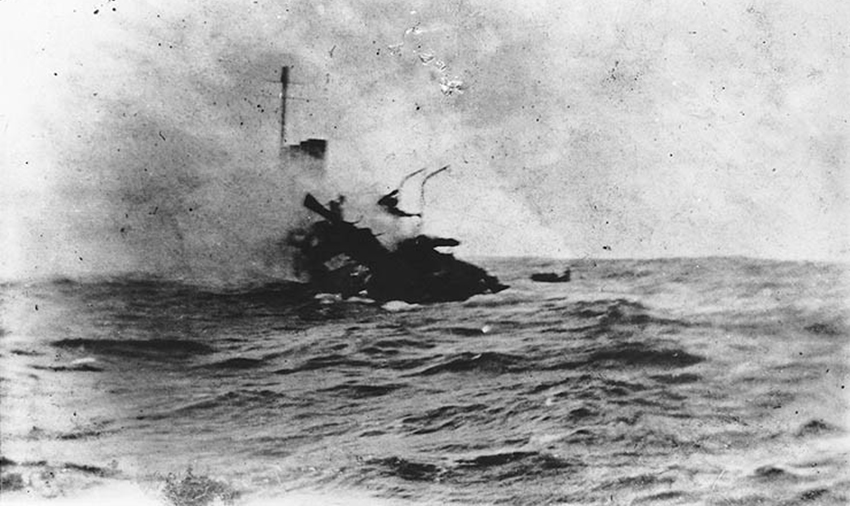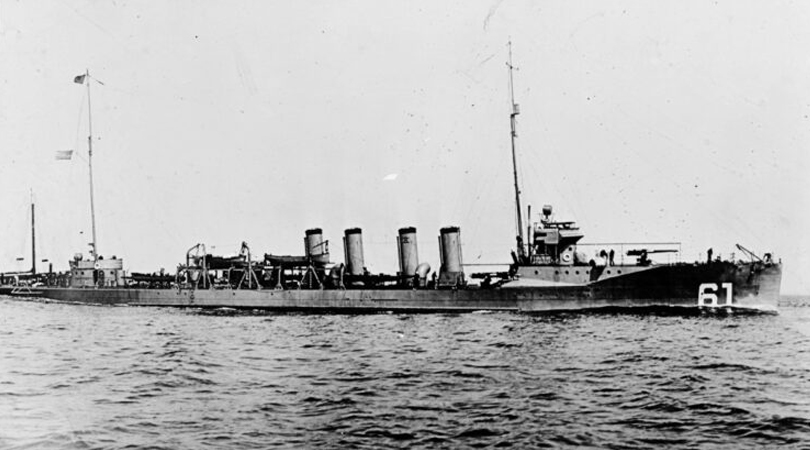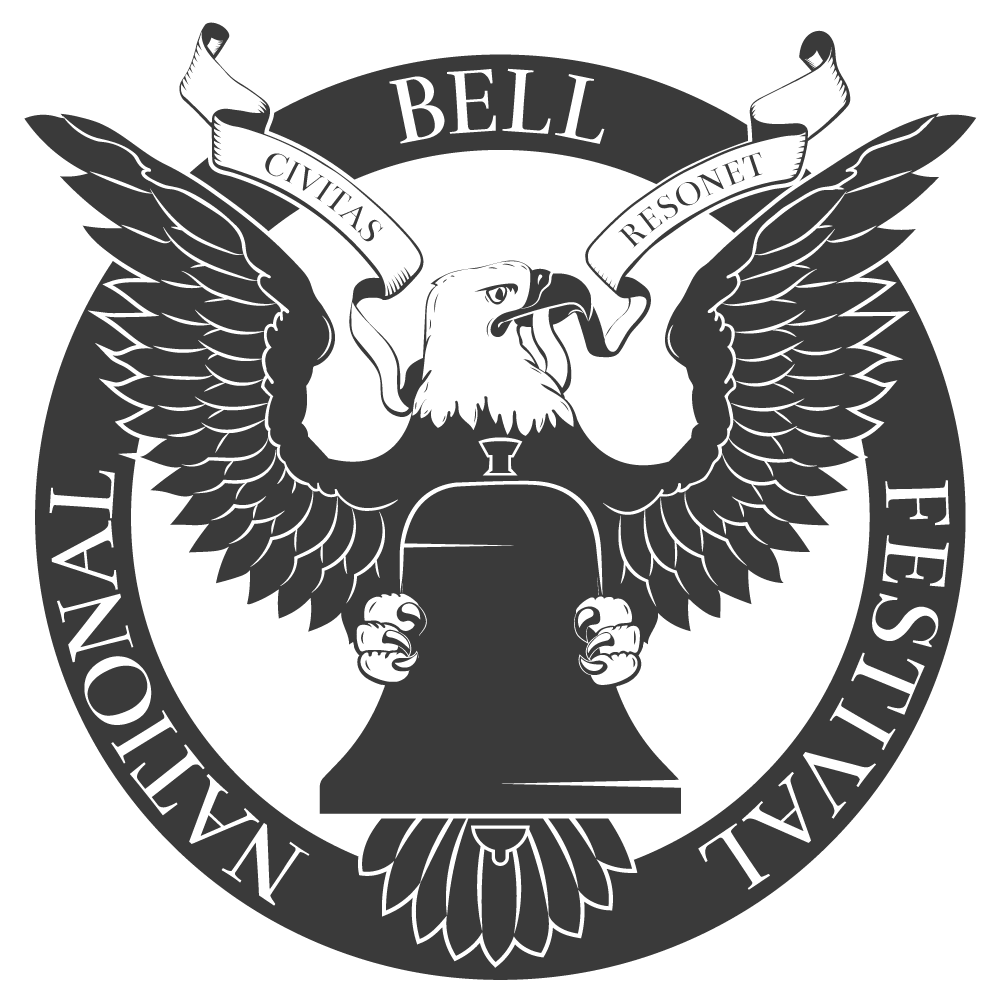On the cold afternoon of Dec. 6, 1917, the Tucker-class destroyer USS Jacob Jones (DD-61) made headway past the southwestern tip of England near the Isles of Scilly. World War I was raging across Europe and German U-boats menaced the seas. To help keep the transatlantic lifeline open, the U.S. Navy established a substantial presence in UK waters – guarding the Western Approaches from Central Powers aggression and ensuring food, weapons, and troops reached allies on the continent.
USS Jacob Jones was escorting a troop and supply convoy returning from Brest, France, to Queenstown, Ireland. At 4:21pm that fateful day, Jacob Jones sighted the wake of a fast-approaching torpedo a thousand yards off her starboard side. Under the command of Lt. Cmdr. David Bagley, the vessel maneuvered to escape, but it was too late. The torpedo ripped into the hull 3 ft. below the water line, rupturing the fuel tank. Within eight minutes, the ship was lost, sinking into the frigid waters. Of the 110 men onboard, two officers and 62 crew perished with the ship.

Image: Black-and-white photograph by Seaman William G. Ellis capturing the destruction and sinking of USS Jacob Jones (DD-61) after being struck by a torpedo from the German submarine U-53 under the command of Hans Rose off the Isles of Scilly, England, on Dec. 6, 1917. Courtesy: Smithsonian Institution.
Wreckage and bell recovery
The only American destroyer sunk during World War I, the USS Jacob Jones lay in still repose in English waters until Aug. 11, 2022, when British divers located the vessel’s wreckage at a depth of 377 ft.

Image: The ship’s bell from the USS Jacob Jones, settled into the seabed and seen for the first time in a century. The wreck of the Tucker-class destroyer was discovered by Darkstar, a technical diving team from the UK, on Aug. 11, 2022. Courtesy: Rick Ayrton.
At the request of U.S. Naval History and Heritage Command (NHHC), a return mission was organized with the UK Ministry of Defence’s Salvage and Marine Operations (SALMO) unit, with pivotal support from the U.S. Embassy in London. On Jan. 22, 2024, the team used a remotely operated vehicle to survey the site and recover a key artifact: the ship’s bell.

Image: The ship's bell recovered from the wreck of USS Jacob Jones on Jan. 22, 2024. Pictured on the deck of the recovery vessel, the bell is engraved “USS JACOB JONES 1915” and encrusted with marine life. Courtesy: UK Ministry of Defence.
“The wreck of the ship is a hallowed war grave and is the last resting place for many of the 64 men who were lost in the sinking,” said Rear Adm. Samuel J. Cox (Ret.), director of NHHC. “U.S. Navy policy is to leave such wrecks undisturbed. However, due to risk of unauthorized and illegal salvaging of the ship’s bell, NHHC requested Ministry of Defence assistance.”
Andy Liddell, SALMO’s Chief Salvage Officer, added: “I am proud of what the team have achieved. To assist our allies in the recovery of the bell from such a historic wreck on the first deployment of the new ROV is a massive achievement.”

Image: Frame from the video feed of the remotely operated vehicle as the UK Ministry of Defence’s Salvage and Marine Operations (SALMO) unit places a wreath and an American flag on the wreck of the USS Jacob Jones to honor lost sailors after recovering the ship’s bell on Jan. 22, 2024. Courtesy: UK Ministry of Defence.
During the survey operation, a wreath and an American flag were placed on the wreck, a tribute to the sailors lost 107 years ago. The ship's bell was then transferred into the temporary custody of Wessex Archaeology, before a formal handover ceremony planned for later this year will bring the bell to NHHC’s Underwater Archaeology Branch for stabilization and conservation work, with calls for the bell’s eventual display at the National Museum of the U.S. Navy in Washington, D.C.
Cover image: USS Jacob Jones underway in 1916 soon after completion. Courtesy: U.S. Naval History and Heritage Command (NHHC).



